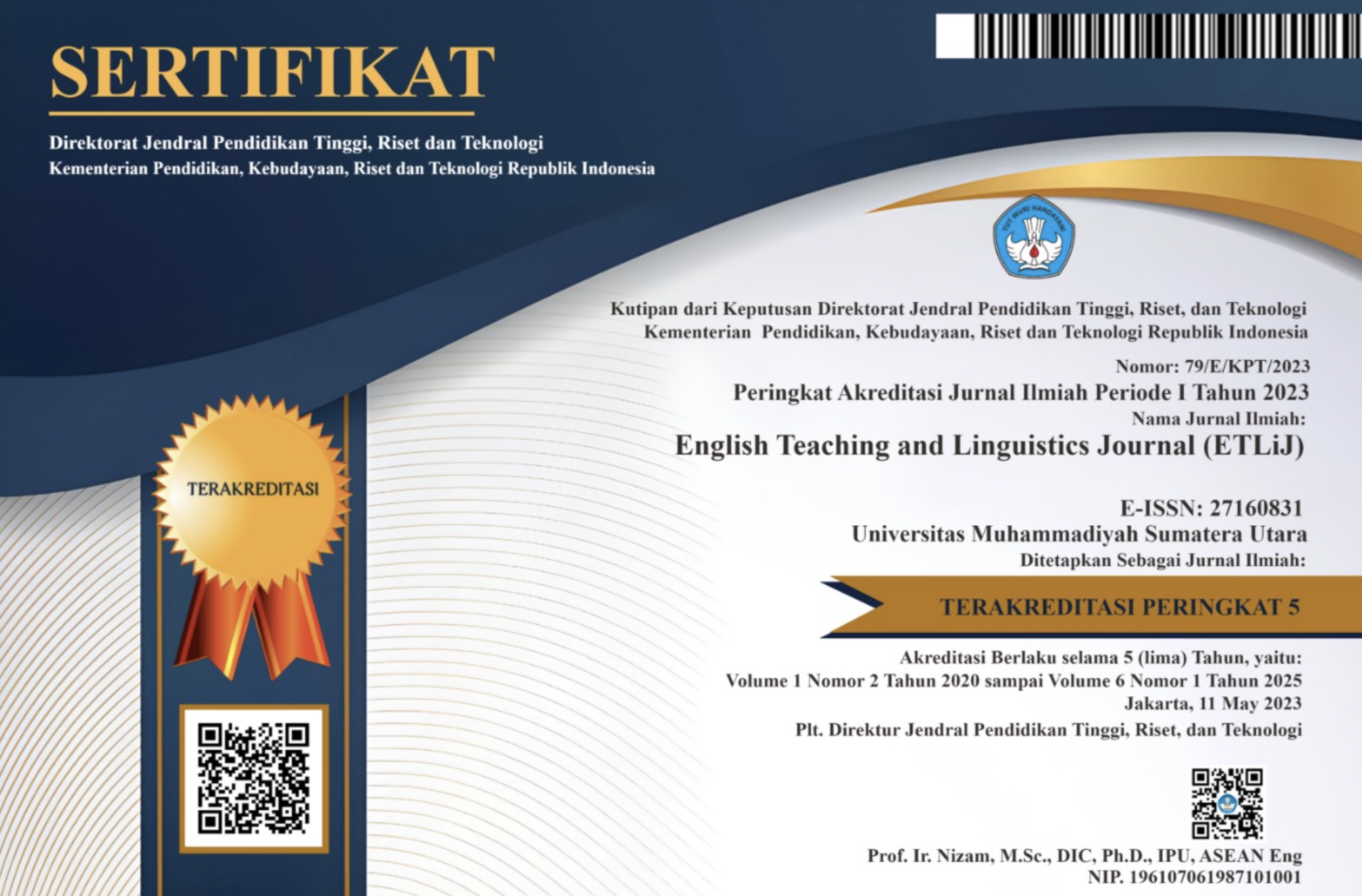The Use of E-Learning to Teach English in the Time of the Covid-19 Pandemic
Abstract
ABSTRACT
Corona (covid-19) pandemic that was claimed from Wuhan, China at the end of 2019 has transferred to countries over the world at the beginning of 2020. This pandemic has brought significant changes in every aspect of human life, economy or commerce, social, health, and education as well. The President of the Republic of Indonesia, Mr. Joko Widodo declared all Indonesian citizenships to practice social/physical distancing. Indonesian government took some preventive strategies to minimize the outbreak of COVID-19. In education sector, Indonesian Education and Culture Minister, Mr. Nadiem Anwar Makarim ordered all students including university students to study from home. This study aims to investigate the use of the E-learning as the current phenomenon in teaching English in the time of COVID-19 pandemic. This research was conducted with a descriptive qualitative research. The result of the study suggests that E-Learning system is considered as the one and only relevant teaching-learning method in the time of pandemic. Teachers and students just accessed the internet from homes and they would be connected to the E-learning application that has been approved by the institutions or the lecturers. However, challenges in applying E-learning were also undeniable, for instances: the unavailability of internet access/ WIFI, learners feel unmotivated, poor levels of student engagement. The lack of actual social and psychological interactions between teachers and students in E-learning system seemed to minimize affective domains. The interactive teacher-student talk is not as effective as in normal classroom. Supports from institutions (colleges or universities) and government are needed for the success of E-learning, particularly in the time of COVID-19 pandemic.
Keywords
Full Text:
PDFReferences
REFERENCES
Clark, R.C. & Mayer, R.E. 2008. E-learning and the science of instruction: proven guidelines for consumers and designers of multimedia learning, second edition. San Francisco: John Wiley & Sons, Inc.
Faridi, Abdurrachman. 2009. Inovasi Pembelajaran Bahasa Inggris Berbasis ICT Dalam Rangka Meningkatkan Mutu Pendidikan. Lembaran Ilmu Pendidikan. 38(1), 63.
Ghirardini, Beatrice. 2011. Food and Agriculture Organization of United Nations. E-Learning methodologies. A guide for designing and developing E-learning courses: A handbook. Italy: FAO (non-commercial use).
Munir. 2009. Pembelajaran jarak jauh berbasis teknologi informasi dan komunikasi. Bandung: Alfabeta.
Nursalam, & Ferry, Affandi. 2008. Pendidikan Dalam Keperawatan. Jakarta: Salemba Medika.
Pranoto, A. et al. 2009. Sains dan Teknologi. Jakarta: PT Gramedia Pustaka Utama.
Rusman, et al .2011. Pembelajaran berbasis teknologi informasi dan komunikasi, mengembangkan profesionalitas guru. Jakarta: PT. Raja Grafindo.
Seok, Soonhwa. 2008. The Aspect of E-learning. International Journal on E-Learning, Proquest, 7(4), 725-741.
Websites:
https://www.who.int/emergencies/diseases/novel-coronavirus-2019/
Accessed on May, 16, 2020 at 10.35 a.m.
www.scribbr.com
Accessed on June 14, 2020 at 2.48 p.m.
DOI: https://doi.org/10.30596/etlij.v1i2.4894
Refbacks
- There are currently no refbacks.

This work is licensed under a Creative Commons Attribution 3.0 License
ISSN: 2716-0831





